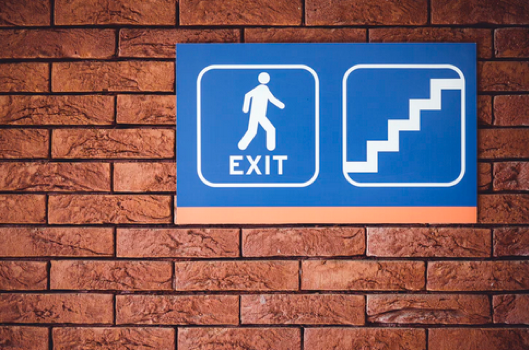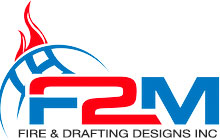Types of Building Fire Sprinkler Systems

What are the different types of building fire sprinkler systems? Sprinkler systems are essential components of a property’s fire safety plan. Besides taking other fire protection safety measures, you should install a state-of-the-art fire sprinkler system. This system suppresses the flames and smoke, preventing the fire from spreading.
Consequently, you will notice a reduction in fire-related damages. Furthermore, it gives people enough time to escape from the building and stay in a safe area until fire services reach the location. There are four major commercial sprinkler systems to consider, each of which offers different features and response rates. These options come at different prices, depending on the features. So, if you want one that offers high levels of protection and a good response time, you should weigh your options carefully.
Types of Fire Sprinkler Systems
Generally, there are four major fire sprinkler systems. These include dry pipe, wet pipe, pre-action, and deluge. All these options are effective to prevent the spread of flames and reducing fire damage. After installing these systems in your property, you don’t have to worry about severe damages in case of fire-related emergencies. While deciding between these options, you should consider their applications and activation process.
1. Wet Pipe System
Wet pipe sprinkler systems are common in commercial and residential buildings. In New York City, you will find these systems in every other home and office. This system starts working when the heat activates the sprinkler head. This triggers the system, and water stored in the pipes releases with pressure. Each sprinkler head has sensors that work independently. This means the heat will trigger sprinkler systems in the affected area. In the case of a false alarm, you bear limited water wastage and related expenses. Wet pipe systems are a low-maintenance option, inexpensive, and are highly recommended for schools, offices, and commercial properties.
2. Dry Pipe System
A dry sprinkler system is different from a wet system because it doesn’t store water in the pipes. Instead, it contains pressurized nitrogen or air that is released when the system detects a fire. The sprinkler head has sensors that identify a fire to activate the valves. After the release of gases, the water fills in the pipe and eliminates the remaining flames or smoke. This system is more complicated and expensive than a wet pipe system. However, it is suitable for regions with cold climates due to frozen pipes. If you use a wet pipe system in cold climates, the water will freeze, blocking the response in an emergency.
3. Pre-Action System
Pre-action systems are similar to dry pipe sprinklers. The only difference is the activation system. Pre-action systems include two-step activation. When the system detects smoke or a fire, it opens the valves allowing water to flow into the pipes. Then, the sprinkler heads release water over the fire after detecting the affected area. This reduces the risks of damage during a false alarm. What happens is, the system verifies the fire twice, effectively protecting your assets from water damage. Pre-action systems are helpful in locations where accidental discharge can result in irreparable damages. For instance, in data centers, libraries, and museums, the management uses pre-action fire sprinkler systems to protect precious items.
4. Deluge System
The deluge sprinkler system is another advanced version of the dry pipe system. But, this system is in contrast to the pre-action system. In this system, the sprinkler heads are always active. This system doesn’t include a heat-sensing device in the head. But, you need to include an external heat or smoke sensor with this system to turn on the valve. When the sensors detect heat, it fills the water in the pipes and releases it from all the active sprinkler heads. This creates a flooding effect in the entire location. Many industries utilize deluge sprinkler systems to protect their highly expensive and high-precision machinery. Many industries also use flammable liquids along with this system for rapid recovery.
Choosing the Best Fire Sprinkler System
 Every sprinkler system that we just mentioned contains special features and unique benefits. Therefore, doing your research before installing a system is highly important. Consider evaluating the options by comparing their pros and cons. The choice of a sprinkler system depends on the specific environment. Also, you can use different systems strategically and secure an entire building. For a fire sprinkler installation plan, you will need a professional who can inspect the area and identify the best locations for installation. Contact F2M Fire and Drafting Designs Inc. and consult with a professional team. They will guide you about how you can enhance the security of your commercial and residential property.
Every sprinkler system that we just mentioned contains special features and unique benefits. Therefore, doing your research before installing a system is highly important. Consider evaluating the options by comparing their pros and cons. The choice of a sprinkler system depends on the specific environment. Also, you can use different systems strategically and secure an entire building. For a fire sprinkler installation plan, you will need a professional who can inspect the area and identify the best locations for installation. Contact F2M Fire and Drafting Designs Inc. and consult with a professional team. They will guide you about how you can enhance the security of your commercial and residential property.
Installing a Sprinkler System
While creating a fire safety protection plan, you cannot exclude fire sprinkler systems. These systems offer a rapid response after detecting a fire and smoke in the facility. But before choosing a fire sprinkler system, it is essential to evaluate the options, maintenance, installation, and design of the different systems. A professionally trained and experienced technician will guide you about factors to consider before choosing a system. Furthermore, they will install the system to ensure maximum security and utmost safety for your assets and employees.
Types of Building Fire Sprinkler Systems: Conclusion
Do you want to install fire sprinkler systems in your facility? If so, you can consult a professional at F2M Fire and Drafting Designs Inc., and they can install a high precision system at your home and office.
Give us a call at 718-928-3009 right now and talk with our experts.

[…] are three main types of piping networks for fire protection systems. This depends on the individual arrangement of […]
[…] fire sprinkler system engineer has a lot of responsibility on their shoulders. They have to make sure that the system […]
[…] One of the most important measures you can take is to install a professional fire sprinkler system. In this blog post, we will discuss 10 reasons why every business needs a professional fire […]
[…] the time to assess your property’s layout, size, and potential fire hazards to determine the type of fire sprinkler system that will best suit your needs. Consider factors such as the number of rooms in your home, the […]
[…] design an effective fire sprinkler system, it’s crucial to comprehend the science of fire itself. Fires are chemical reactions […]
[…] important is it to regularly perform fire sprinkler system maintenance? Fire sprinkler systems are a critical component of fire protection in any building, whether it’s a residential home, […]